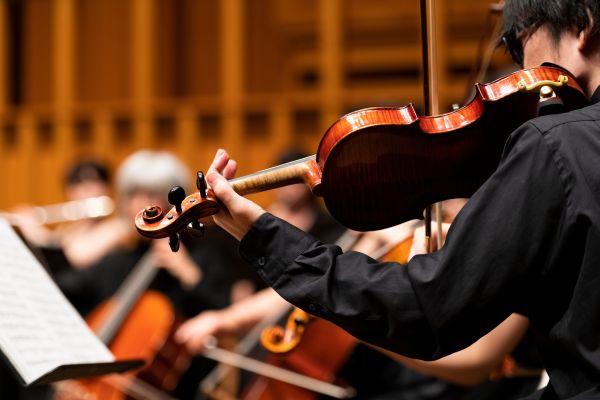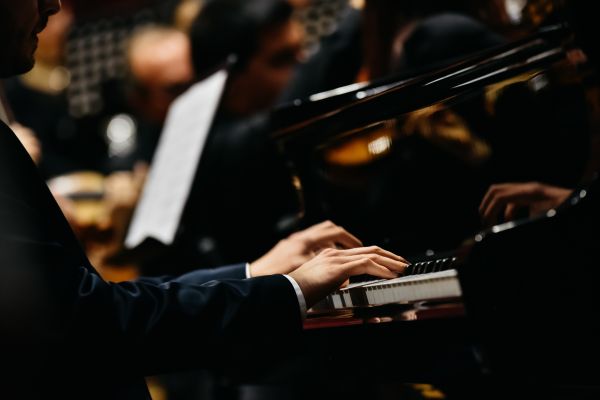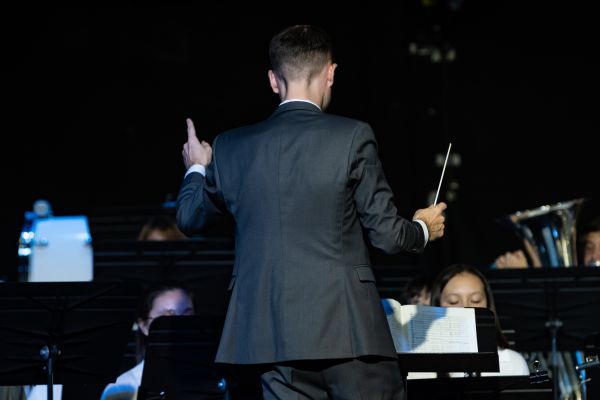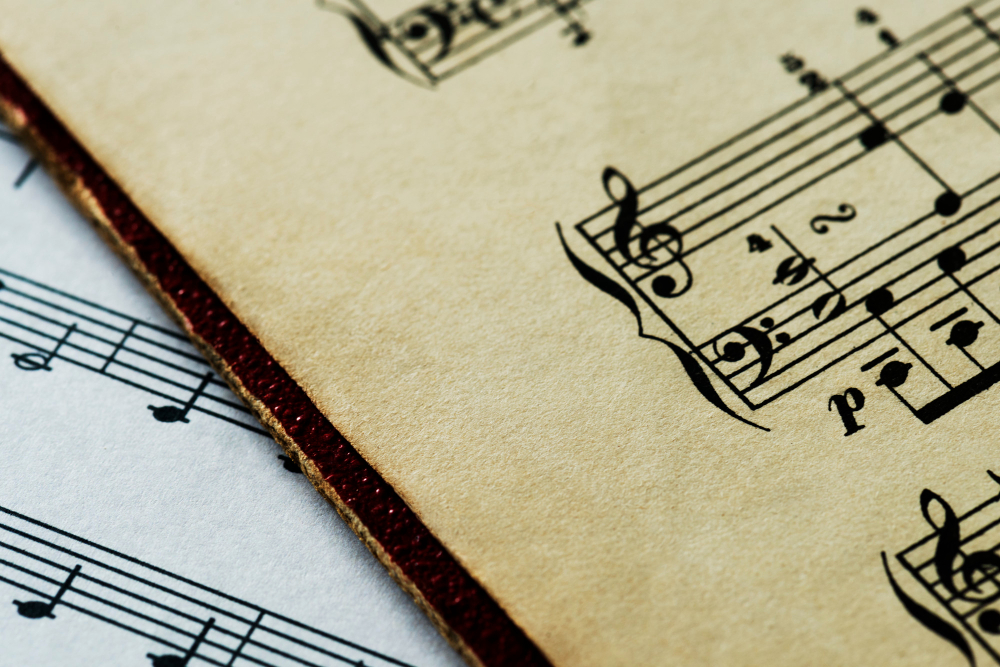The orchestra, a massive ensemble of musicians playing instruments from various families, holds a significant place in the world of western classical music. With its vast array of musicians, the orchestra incorporates strings, woodwinds, brass, percussion, and occasionally keyboard instruments, as well as vocal soloists. This diverse musical group can perform a wide range of musical styles, including classical symphonies, opera overtures, and more, resulting in complex and intricate musical textures, along with a broad dynamic range. The orchestra is masterfully led by a conductor, who maintains the tempo, communicates with the musicians, and shapes the overall interpretation of the music. As a fundamental part of the western classical musical tradition, the orchestra remains a cornerstone of classical music performance today.
String Instruments
The string family, including instruments such as the violin, viola, cello, and double bass, plays a crucial role in the orchestra. These instruments generate sound through the vibration of strings stretched across a resonating chamber, which the player produces by either bowing or plucking the strings. The string family’s versatility and tonal diversity, from the high-pitched, sweet sound of the violin to the rich, deep tones of the cello and double bass, allow it to play a major role in orchestral music, contributing much of the harmony and melody. The string family is regarded as the backbone of the orchestra, and its presence is essential for creating a rich and full orchestral sound.

Woodwind Instruments
The woodwind instrument family in an orchestra includes instruments such as the flute, oboe, clarinet, and bassoon. These instruments produce sound by blowing air through a reed or across a hole, which causes the air column inside the instrument to vibrate. The different shapes and sizes of the instruments and the varying types of reeds used produce different tonal qualities, from the bright, piercing sound of the flute to the warm, mellow tones of the oboe. The woodwind family is known for its agility and ability to play quick, intricate passages, as well as its versatility in blending with other orchestral instrument families. Whether playing in ensemble or as soloists, the woodwinds play a crucial role in creating the rich, colorful textures of orchestral music.

Brass Instruments
The brass instrument family in an orchestra includes instruments such as the trumpet, trombone, french horn, and tuba. These instruments produce sound by buzzing the lips into a cup-shaped mouthpiece, which causes the air column inside the instrument to vibrate. The brass family is known for its powerful, resonant sound and ability to project over the entire orchestra. The bright, brilliant sound of the trumpet and the warm, mellow sound of the french horn add excitement and drama to orchestral music. The tuba provides a strong foundation for the ensemble by playing the lowest notes. The trombone, with its unique sliding technique, adds versatility and nuance to the brass family’s contribution to the orchestral sound. The brass family plays a crucial role in the overall sound of the orchestra, adding depth, power, and brilliance to the music.

Percussion Instruments
The percussion instrument family in an orchestra includes instruments such as drums, cymbals, xylophones, marimbas, and a variety of other instruments that produce sound through striking, shaking, or rattling. These instruments provide the rhythmic foundation for the music and add color and texture through a range of sounds and techniques. The percussion family also contributes to the overall dynamic range of the orchestra, playing both soft, delicate rhythms and loud, driving beats. The versatility and wide range of timbres available from the percussion instruments make them a crucial component of the orchestral sound. Whether played in a supporting role or as a solo instrument, the percussion family plays an essential role in creating the musical energy and excitement of orchestral performances.

Keyboard Instruments
The keyboard instrument family in an orchestra features the piano and harpsichord. These instruments generate sound by striking strings with hammers (piano) or plucking strings with quills (harpsichord). The keyboards bring richness and versatility to the orchestral sound and often perform as both solo instruments and accompaniments. The piano boasts a broad dynamic range and the ability to play softly and loudly, making it a popular and versatile choice in orchestral music. The harpsichord has a brighter, lighter tone and is often used in baroque and classical music. The keyboard family plays a significant role in the orchestral sound, adding color and depth and providing a sturdy foundation for the ensemble.

The Conductor
The conductor plays a crucial role in the orchestral performance, leading the ensemble as the musical guide. Through their gestures and cues, they communicate with the musicians, determining the tempo, phrasing, dynamics, and expression of the performance. The conductor is responsible for shaping the overall interpretation of the score and ensuring all musicians are in sync, creating a unified and captivating performance for the audience. A skilled conductor brings out the musicians’ best, elevating the ensemble to produce a cohesive and engaging performance.

Enrol for our one-on-one online piano classes where we have an exclusive Music Appreciation elective course which goes deeper into the topics discussed in this article. This course helps students understand and appreciate different instruments and expand their musical horizons through fun and enjoyable online sessions.

